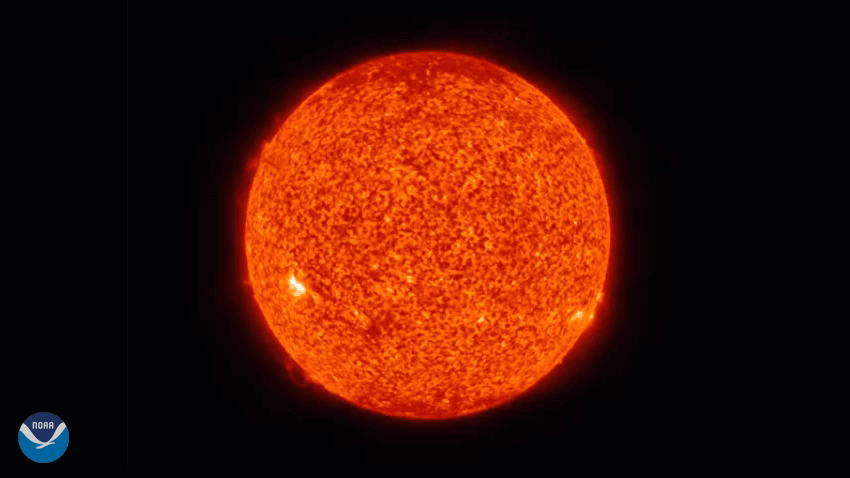
On October 16, 2020, the Solar Ultraviolet Imager (SUVI) instrument onboard GOES-East observed two solar flares and several eruptions from the surface of the Sun. Flares are brief intense flashes of light that are often associated with sunspots, or dark blotches on the Sun with high magnetic concentrations, that scientists use to track solar activity over the course of the solar cycle.
Eruptions are outward explosions of huge amounts of super-heated plasma that travel into the solar system. Often flares happen at the start of an eruption. You can think of flares and eruptions like lightning and storms. They often occur together, but they don't have to. The flares in question are not visible in this movie. Instead, the imagery in the lower-right hand corner shows the failed eruption that happened afterward, where plasma (or electrified gases) from the Sun partially splashed out then fell back to its surface as opposed to flowing outward into the solar system.
SUVI is a telescope that takes images of the full Sun in six extreme ultraviolet channels around the clock. Various elements in the atmosphere of the Sun release light at specific wavelengths depending on their temperature, so by observing in several different wavelengths, it can give us a more complete picture of the Sun’s upper atmospheric and underlying structure.
Last month, NOAA and NASA announced that Solar Cycle 25 began in December 2019, which brings along with it an upswing in solar activity in the coming months and years. The solar maximum is expected around July 2025, with an estimated peak of approximately 115 visible sunspots. Solar Cycle 25 is expected to be weak, similar to the progression of Solar Cycle 24; however, according to solar science expert Doug Biesecker, “While we are not predicting a particularly active Solar Cycle 25, violent eruptions from the Sun can occur at any time.”
The GOES-East geostationary satellite's high-resolution imagery provides optimal viewing of severe weather events. However, it doesn’t just view Earth. The satellite also carries a suite of instruments, such as SUVI and EXIS, that monitor the Sun and detect approaching space weather hazards.
